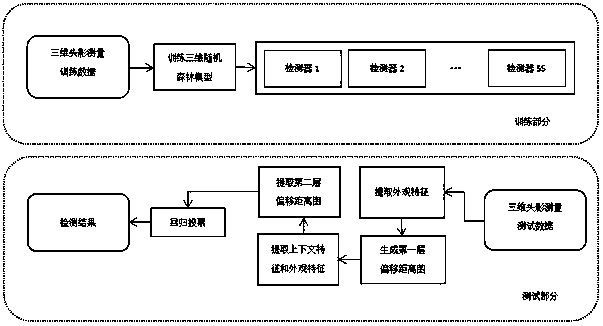Feature point location method in cephalometric image based on 3D random forest model
A technology of random forest model and feature point positioning, applied in image analysis, calculation model, biological model, etc., can solve the problems of unreasonable spatial distribution and spatial inconsistency of anatomical marker points, and achieve the purpose of strengthening spatial consistency, improving quality, Accurately Detected Effects
- Summary
- Abstract
- Description
- Claims
- Application Information
AI Technical Summary
Problems solved by technology
Method used
Image
Examples
Embodiment Construction
[0027] The present invention will be further described below in conjunction with the accompanying drawings. The following examples are only used to illustrate the technical solution of the present invention more clearly, but not to limit the protection scope of the present invention.
[0028] A method for locating feature points in a cephalometric image based on a three-dimensional random forest model of the present invention, see figure 1 shown, including the following process:
[0029] In step (1), a certain number of three-dimensional cephalometric CBCT images are obtained as a training image set.
[0030] The training image size is 512x512x60 pixels.
[0031] In step (2), several sampling points are randomly selected in each training image, and the 3D Haar-like features of each sampling point are calculated and used as 3D appearance features.
[0032] The number of sampling points randomly selected in each training image is 200. The definition of the three-dimensional ...
PUM
 Login to View More
Login to View More Abstract
Description
Claims
Application Information
 Login to View More
Login to View More - R&D
- Intellectual Property
- Life Sciences
- Materials
- Tech Scout
- Unparalleled Data Quality
- Higher Quality Content
- 60% Fewer Hallucinations
Browse by: Latest US Patents, China's latest patents, Technical Efficacy Thesaurus, Application Domain, Technology Topic, Popular Technical Reports.
© 2025 PatSnap. All rights reserved.Legal|Privacy policy|Modern Slavery Act Transparency Statement|Sitemap|About US| Contact US: help@patsnap.com


